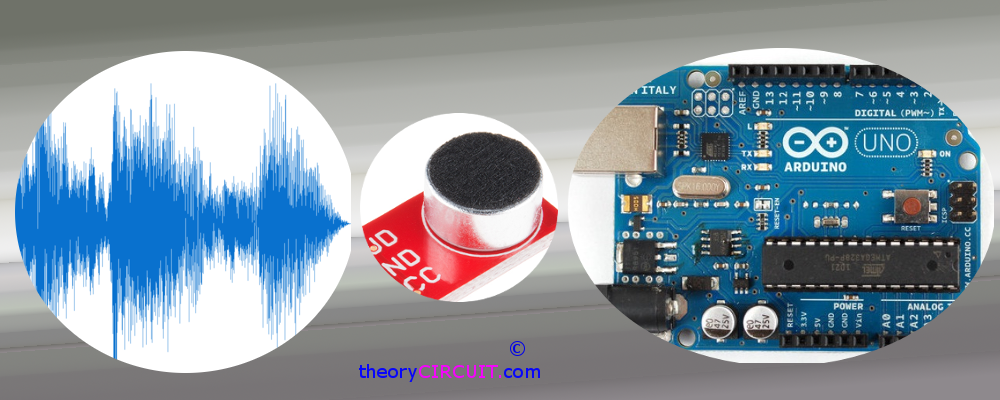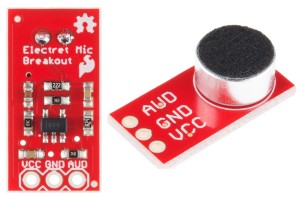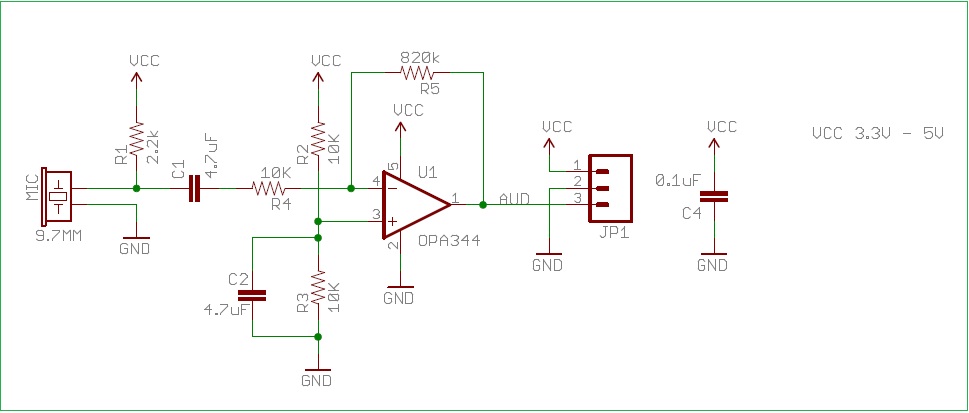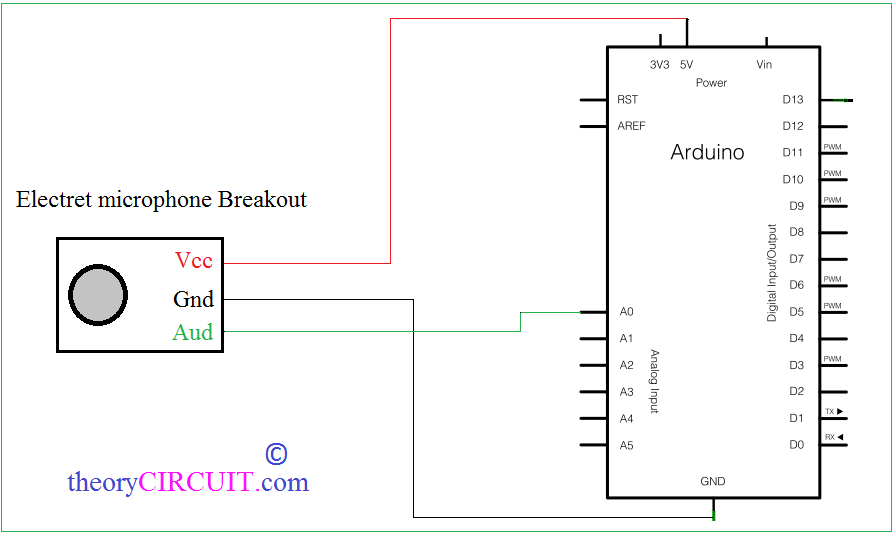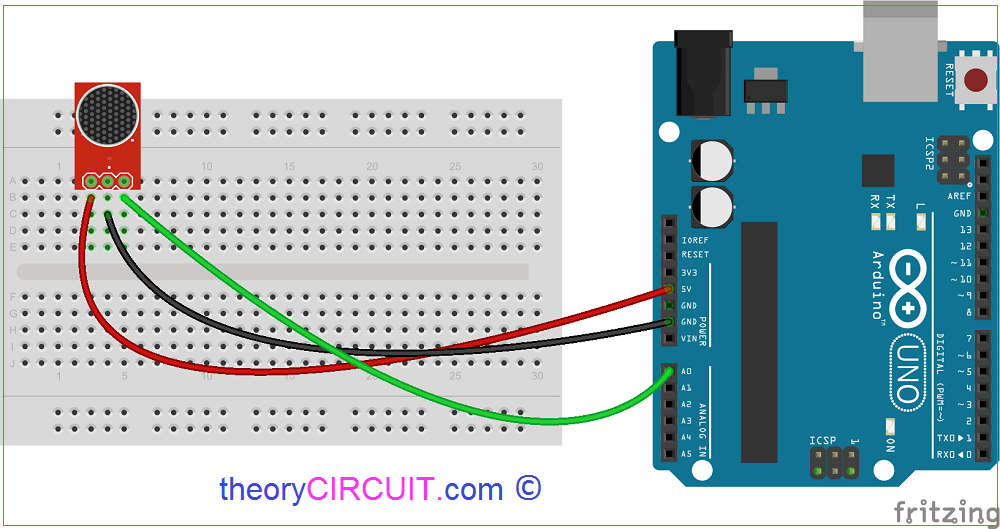Last Updated on March 16, 2024
Knock? Knock! did you hear that sound, now you can add sound detection to your Arduino project, here I have used sparkfun Electret microphone Breakout board which is constructed with small microphone (100 Hz – 10KHz) and preamplifier. It detects and amplify the sounds of door knocks, claps, voice or any other sounds loud enough to picked up by the microphone.
Microphone Breakout
Here the Electret Mic capsule capturing sound wave between two conducting plates (one a movable and the other fixed) and converting sound waves into electrical wave.
Microphone Breakout Schematic
The Electrical signals are amplified and appears in “AUD” pin of breakout board. It can be picked up by the micro controller’s ADC.
The output at AUD pin orgin at half the supply voltage hence the ADC will ideally read 1/2 the full scale or in case 512 on a 10 bit ADC.
Arduino Mic Breakout Schematic
Arduino Hookup
Connect Vcc pin and Ground pin of breakout board to Arduino power supply pins (+5 and Gnd), and then connect AUD (sound output) pin of breakout board to Arduino’s Analog pin A0.
Breakout — Arduino
Vcc –> +5V
Gnd –> Gnd
AUD –> A0
Here i have used the Arduino’s on board LED at digital pin 13, you can use any other pins as per your need.
Arduino Code for Sound Detection
Simple Code
int led = 13; int threshold = 600; //Change This int volume; void setup() { Serial.begin(9600); // Serial port begin pinMode(led, OUTPUT); } void loop() { volume = analogRead(A0); // Reads the value from the Analog PIN A0 //Serial print level Serial.println(volume); delay(100); if(volume>=threshold){ digitalWrite(led, HIGH); //Turn ON Led } else{ digitalWrite(led, LOW); // Turn OFF Led } }
Try clapping, Snapping, Door slamming. blowing, knocking etc.., and find the changes of level in serial monitor and Adjust the if statement according to the level printed in serial monitor.
You Can try this Arduino code also
/* * This code has been adapted from the * Example Sound Level Sketch for the * Adafruit Microphone Amplifier */ const int sampleWindow = 250; // Sample window width in mS (250 mS = 4Hz) unsigned int knock; int ledPin = 13; void setup() { Serial.begin(9600); pinMode(ledPin, OUTPUT); } void loop() { unsigned long start= millis(); // Start of sample window unsigned int peakToPeak = 0; // peak-to-peak level unsigned int signalMax = 0; unsigned int signalMin = 1024; // collect data for 250 miliseconds while (millis() - start < sampleWindow) { knock = analogRead(0); if (knock < 1024) //This is the max of the 10-bit ADC so this loop will include all readings { if (knock > signalMax) { signalMax = knock; // save just the max levels } else if (knock < signalMin) { signalMin = knock; // save just the min levels } } } peakToPeak = signalMax - signalMin; // max - min = peak-peak amplitude double volts = (peakToPeak * 3.3) / 1024; // convert to volts Serial.println(volts); if (volts >=1.0) { //turn on LED digitalWrite(ledPin, HIGH); delay(500); Serial.println("Knock Knock"); } else { //turn LED off digitalWrite(ledPin, LOW); } }
